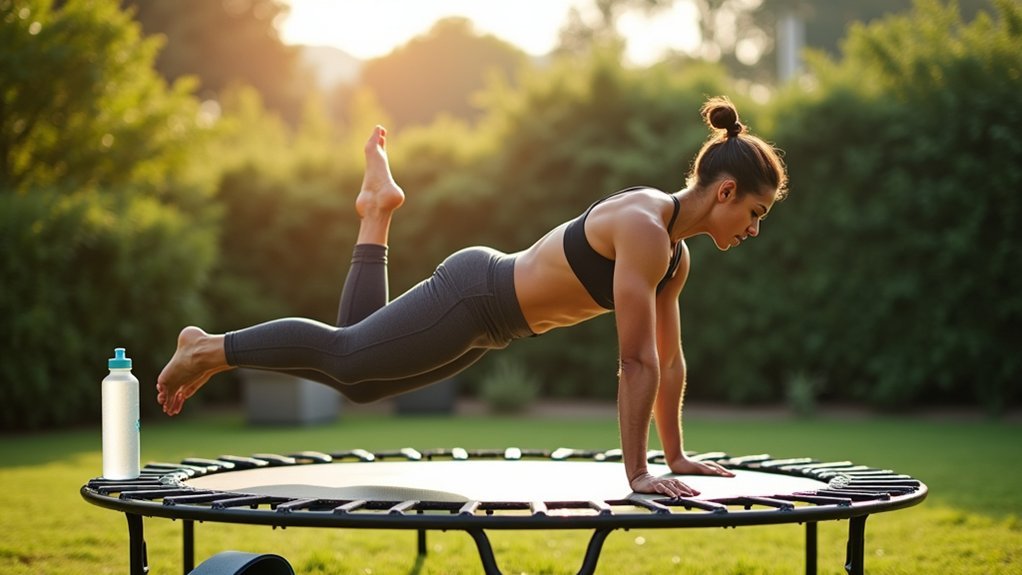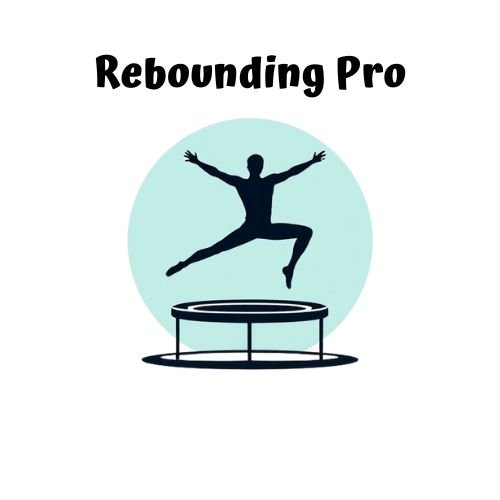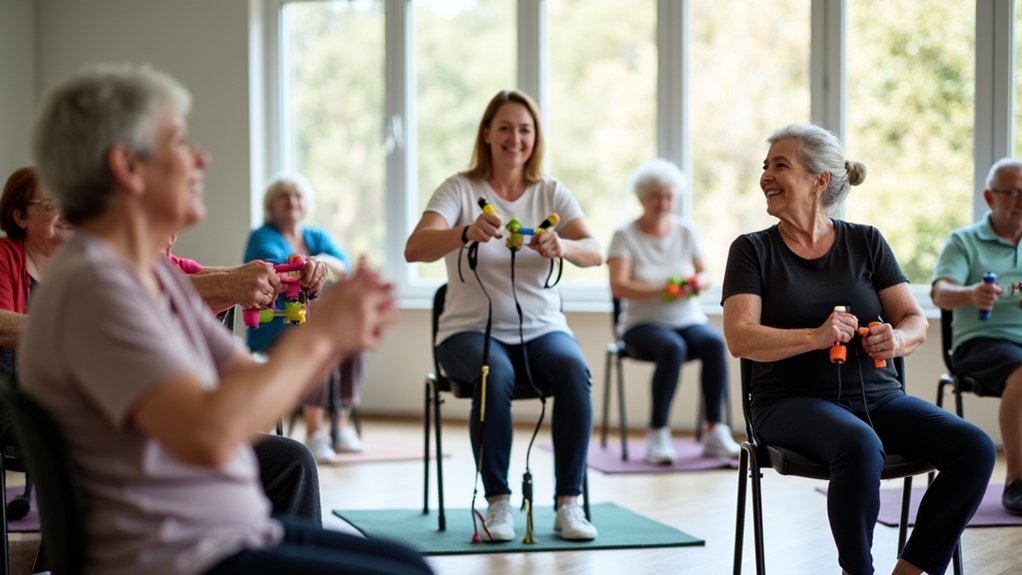Trampoline crunches deliver powerful core engagement with reduced joint impact. Three essential exercises include the Jump-and-Tuck (knees to chest), Seated Ab Crunches (lift and crunch forward), and Side-to-Side Jumps (targeting obliques). Keep your feet hip-width apart with slightly bent knees for stability and control your bounces for maximum muscle activation. Add ankle weights or resistance bands as your strength improves. The elastic surface’s 3D instability will transform your core workout effectiveness in ways traditional exercises can’t match.
The Science Behind Trampoline Core Training

While traditional crunches build core strength, trampoline crunches elevate the exercise through unique biomechanical advantages. The elastic surface creates constant gravitational shifts that force your deep abdominal muscles to engage dynamically—something floor exercises can’t replicate.
Your core works harder on a trampoline because it must stabilize against unpredictable movement vectors. This activates your transverse abdominis more effectively while the surface absorbs 80% of impact forces, protecting your joints and spine. This protection makes trampoline workouts low-impact yet intense, ideal for those with joint concerns.
The trampoline’s gentle surface challenges your core more intensely, engaging stabilizing muscles while safeguarding your skeletal system.
The trampoline’s reactive surface demands real-time stabilization, triggering co-contraction across your entire core musculature. This 3D instability improves neuromuscular coordination between superficial and deep muscle groups.
Plus, you’ll experience enhanced caloric burn comparable to running (8-10 METs) while stimulating bone density through vertical loading—making trampoline crunches remarkably efficient.
Master These 3 Core-Defining Rebounding Exercises
Three powerful rebounding exercises will transform your core routine on the trampoline.
Start with the Jump-and-Tuck by leaping high and pulling your knees tight to your chest, instantly activating your core muscles.
Next, try Ab Crunches on the unstable surface—sit centrally, lift your feet, and crunch forward.
The trampoline’s flexibility intensifies the engagement compared to floor crunches.
Finally, master Side-to-Side Jumps to target those stubborn obliques.
Bounce laterally with control, keeping your core tight throughout the movement. Maintain proper form by focusing on core engagement throughout each exercise, similar to traditional mat workouts.
For maximum results, incorporate ankle weights as your strength improves.
These exercises deliver both cardiovascular benefits and core strengthening while reducing impact on your joints—making them perfect for all fitness levels.
Maximizing Results: Form, Progression, and Safety Tips

Achieving remarkable results with trampoline crunches depends on mastering both technique and safety principles. Keep your feet hip-width apart with slightly bent knees while engaging your core throughout each movement.
Focus on controlled bounces rather than jerky motions to properly activate primary and secondary core muscles. Warming up with dynamic stretches like reaching side to side prepares your body for more intense activity. As your strength improves, gradually increase bounce height and incorporate resistance bands for added challenge.
Control your bounce to properly engage core muscles; increase height and add resistance bands as strength improves.
Combine trampolining with traditional core exercises in circuit-style workouts for maximum effectiveness. Don’t forget to warm up with dynamic stretches before each session.
Always verify your trampoline area is obstacle-free and regularly check equipment for wear. Listen to your body to avoid overexertion.
For best results, maintain consistency in your routine and track your progress to make necessary adjustments.
Frequently Asked Questions
How Long Should a Trampoline Ab Workout Last for Beginners?
As a beginner, you’ll want to keep your trampoline ab workouts short – just 5 to 10 minutes. You can do these sessions three to four times weekly, gradually increasing as you build stamina.
Can Seniors Safely Perform Trampoline Crunches?
Yes, you can safely perform trampoline crunches as a senior if you’re cleared by your doctor. Start with modified versions, use support handles, and progress slowly. Always maintain proper form to protect your joints.
Are Mini Trampolines as Effective as Full-Sized Ones?
Mini trampolines are more effective than full-sized ones for core workouts. You’ll get targeted ab engagement, joint protection, and comparable cardio benefits while using less space. They’re specifically designed for controlled fitness exercises.
How Soon Can You Expect Visible Results From Trampoline Exercises?
You’ll notice improved core endurance within a few weeks of regular trampoline workouts. Some see immediate results, with visible transformation after three weeks and significant physical improvements after eight weeks of consistent training.
Can Trampoline Workouts Help With Lower Back Pain?
Yes, trampoline workouts can help your lower back pain by strengthening core muscles, promoting spinal decompression, and offering low-impact exercise. You’ll experience reduced pressure on spinal discs during the gentle bouncing motion.
In Summary
Trampoline crunches transform mundane ab work into a dynamic core experience. You’ll feel the difference as you bounce through these three exercises, engaging more muscle fibers than traditional floor routines. Remember to maintain proper form, progress gradually, and listen to your body. With consistent practice, you’ll develop not just visible abs, but functional core strength that improves your overall fitness and daily movements.





Leave a Reply